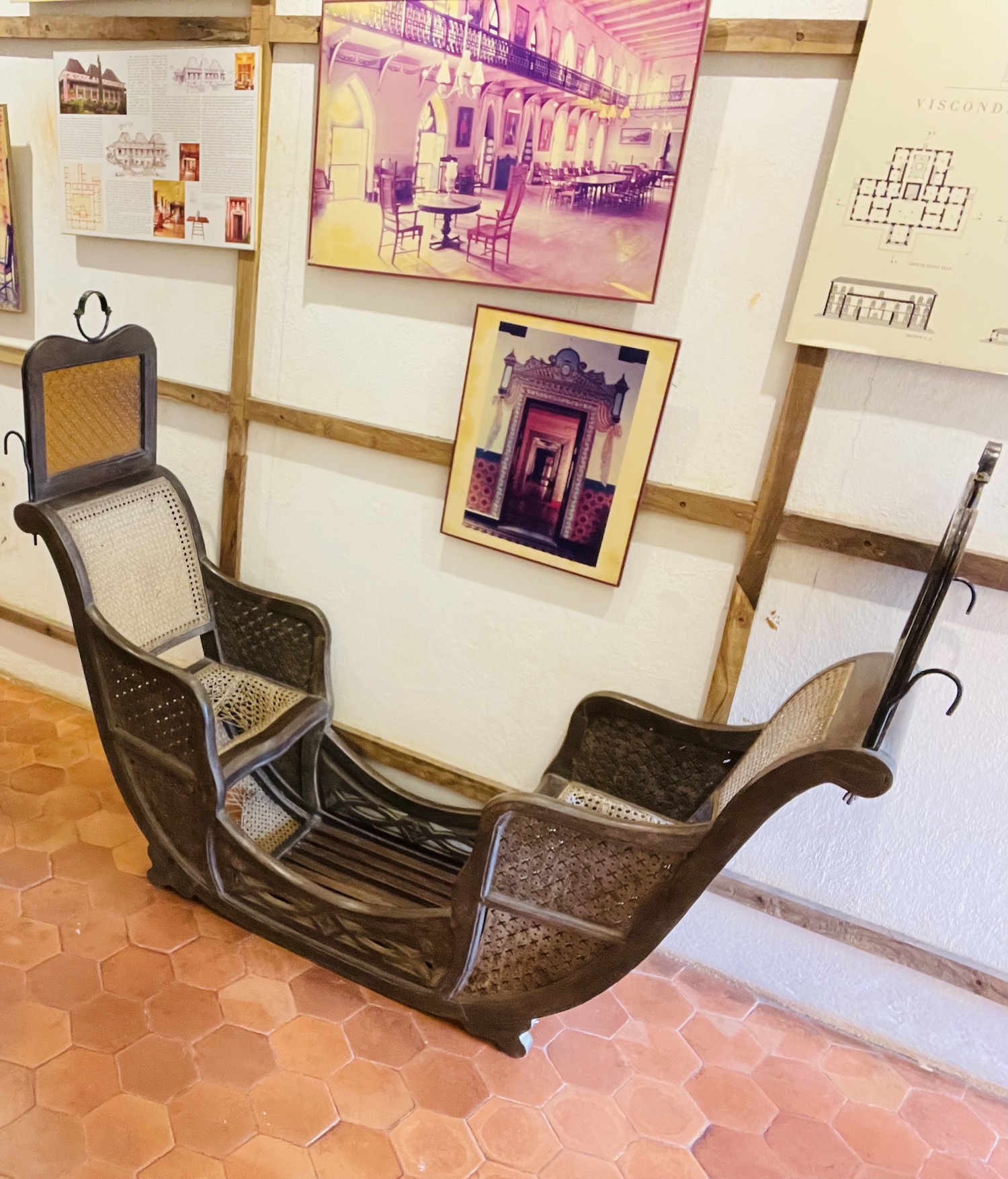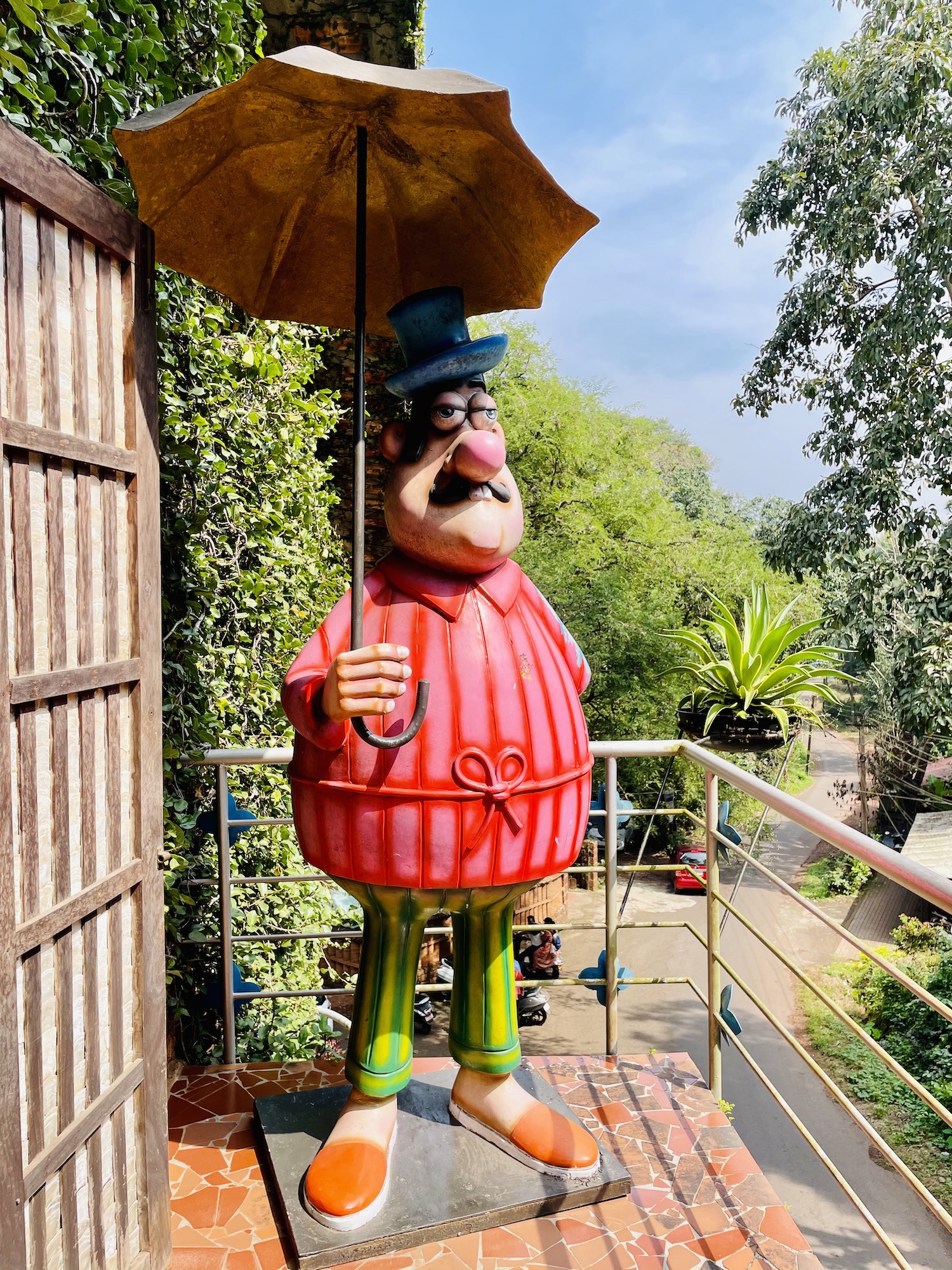Goa is an internationally recognised tourist destination, popular for its sandy beaches and vibrant party culture, placing the smallest state in Western India on the world tourism map. While Goa contributes massively to the tourism income of the country, very few visitors know than Goa has much more to explore.
Ride a scooter through the countryside of Goa, and the most striking feature is the unique architecture of the buildings that whip by. The churches, the temples, and the catholic homes with their unique Balcaos, outdoor porches characterised by thick curved walls with built-in seats, and finished in brightly-colored concrete. Hindu homes with the Tulsi (Holy Basil) plant in the courtyard are a common sight too, letting visitors feel the traditional lifestyle still practiced in Goan homes today.
A museum in the village of Torda gives visitors a peek into this bygone era, and several mansions around Goa are open for visitors.

The Houses of Goa Museum in Torda was designed by a well-known architect, Gerard da Cunha
Portuguese Colonization
When the Portuguese colonized Goa in 1510, they brought with them their own distinct architectural style. The many magnificent palatial Portuguese mansions in Goa are a legacy of Portuguese rule, which continued for more than 450 years and left a distinctive mark on the state. Prior to Portuguese arrival in Goa in 1510, the area witnessed the civilization of Kadambas, an ancient royal family from modern Karnataka, and later the Hindu and Islamic dominance that knitted the fabric of Goan life.
Goa’s geographical and historical existence has prevailed since pre-historic and ancient times, but it was only in the 1970s that it was discovered by off-beat travellers.
In 1961, before the Hippie culture arrived on the beaches of Goa, India annexed Goa from the Portuguese rule.
Houses of Goa Museum
Recognizing the rich cultural value of Goan homes, a well-known architect, Gerard da Cunha, established the Houses of Goa Museum in 1997 in the village of Torda.
This private museum is an intellectual treat for curious voyagers who wish to explore the history, culture and lifestyle that existed in traditional Goan homes.
Located in the Penha De Franca area, this museum is a 10-minute drive from Mall de Goa (the largest shopping mall in Goa). The museum is built on the top of a sloping road and boasts a triangular shape that resembles a ship. Da Cunha, the owner of the three-storey museum, lives in a traditional bungalow adjacent to the museum.
Artefacts, photographs, house plans and other displays help showcase the beauty, history, and traditions of Goa houses and the Indo-Portuguese architecture. Visitors discover they were not just buildings of brick and mortar, but were also designed to encourage social and community bonding.

The ‘Machila’ was one of the main means of transport for Goan elite
One example of this is the design of the ‘Balcao’. Influenced by the Portuguese-style porch or ‘alpendre’ that was a trend when building homes during the Portuguese rule over Goa.
A Balcao is not just an architectural element of design, it’s also a place of gathering and relaxation, a place to have a cup of tea with neighbours or random guests that drop in.
Other intriguing artefacts to take note of inside the museum are the Machila (a handheld carriage in which the elites of Goa moved around), a Hindu ‘devhaara’ (holy altar), a collection of large old keys, and a pictorial display of various houses around Goa, all lending a vintage feel to the place and peek into a bygone era.
Mario’s Gallery
The museum also displays the work of renowned Goan cartoonist Mario Miranda. Large sculptures of cartoon characters designed by Miranda are placed around the museum premises. The Mario Gallery offers his work for sale and sells coffee mugs, t-shirts, coasters, bags etc., that tote Mario’s cartoons and are known for showcasing Goan life.
The gallery is open on Monday—Friday from 10 a.m. to 5.30 p.m., and on Saturday from 10 a.m. to 1 p.m.
Entering the Museum
The museum is open from Tuesday to Sunday between 10 a.m. to 7.30 p.m., Permission is needed to take photographs.
The museum is 30 minutes by road from Panaji (the capital of Goa) and 1.5 hours from Goa’s Dabolim International Airport.

The whimsical work of Mario Miranda is seen around the museum and his namesake gallery
Visit A Mansion or Two
Fontainhas, Goa’s Latin Quarter, is the main attraction in the the capital city Panjim, rife with old Portuguese charm and a colourful and radiant soul.
Panjim is abundant with old Portuguese mansions too, and this district was declared a UNESCO Heritage Zone in 1984. It’s worth exploring, and you can even stay in a heritage property there.
However, the most substantial and imposing Portuguese mansions can be found in rural areas of South Goa, such as the Braganza House in Chandor, Casa Araujo Alvares and the Figuerido House in Loutolim, and Palacio de Deao in Quepem.
These magnificent mansions are all open to the public
If you don’t have a car, organise a full-day Grand Old Houses of Goa Private Tour from Goa Magic, which will take you to two properties, offers lunch, and a stop at the bustling Margao fish market.
For a glimpse of Goa off the touristed path, this museum and gallery are not to be missed.
***
BeSeeingYou In: Goa
Good to Know: You’ll need to take of your shoes to enter the museum
WOW! Factor: You can actually stay overnight at Figuerido House, which opened as an inn in 2017
Tip: Panjim, the capital city of Goa, is just 5 kilometres from the museum so you could arrange a taxi from a hotel
***
Author bio: Shraddha C Sanhuklar
For more travel inspiration go to BeSeeingYou










